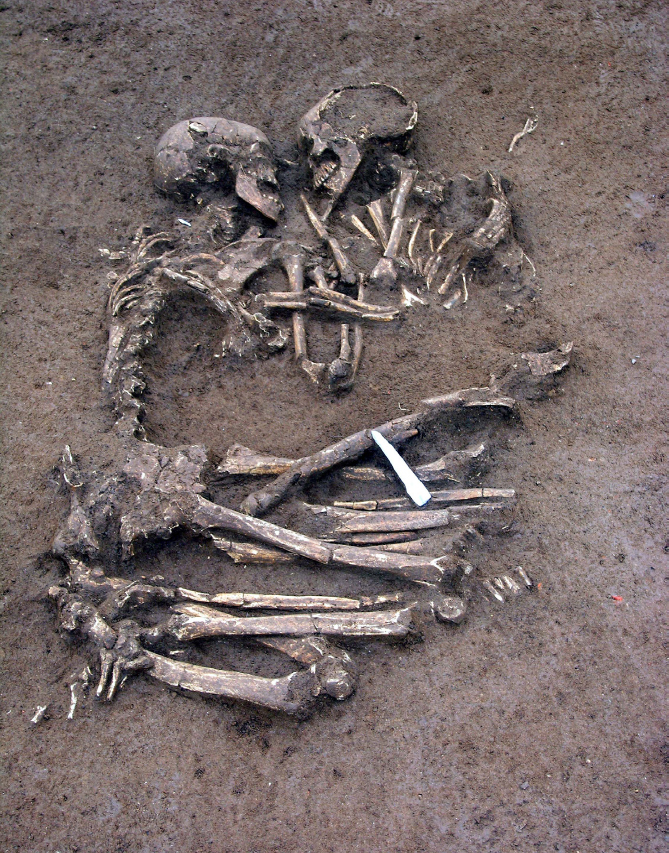Document 1-4: Double Burial from Mantua, Italy (ca. 6000–5000 B.C.E.)
Clues About Early Human History in a Neolithic Grave
When studying the period before written documents, scholars have to turn to other methods of discovering the past, such as archaeology. Occasionally, modern construction uncovers archaeological remains, like the burial shown here from Mantua, Italy. The teeth of these individuals are only slightly worn, suggesting that they died relatively young. Their grave included several flint stone tools (one lying on the individual on the right). Near this burial site were a number of other burials, all of single individuals, and a small Neolithic village.

AP Photo/Archaeological Society, SAP.
READING AND DISCUSSION QUESTIONS
- What can this burial tell us about the relationships among humans at this time? Why do you think the individuals were buried in such an intimate fashion?
- How can we use grave goods, such as the flint tool seen here, but also pottery and jewelry, to understand more about human life in the past? What if an individual was buried without grave goods? What might grave goods indicate about the formation of social hierarchies?
- Why do you think these individuals were buried with useful items?